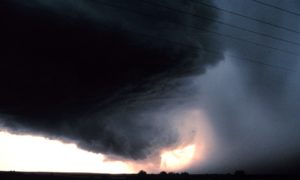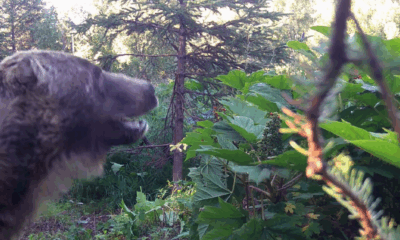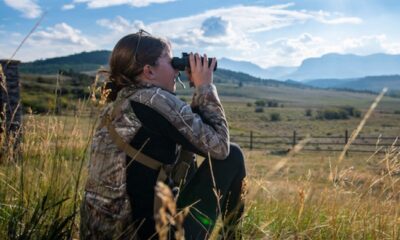Camping & Survival
Mountain Man’s Guide to Surviving Spring Weather

By the pricking of my thumbs, something Western this way comes.
Fancy meteorological software, pshaw. Here’s how to tell when the weather’s about to get Western on you.
One fine May a few years ago I found myself in a turkey blind with a hunting guide, an older fellow who bore the many nicks and scars of a life well-lived in the outdoors. As the afternoon warmed, he winced, shifted position, and informed me that he had an urgent bulletin courtesy of his knees that informed us that we needed to get back to the lodge. Right now. I was upset about missing out on my afternoon shot at a nice Rio, but I obeyed…and, when the tornado touched down an hour later, I was very, very glad I had done so.
Here’s the interesting part: My guide knew about that tornado half an hour before NOAA did. There hadn’t been anything in that day’s weather reports about severe weather–I had checked a mere 12 hours before. I’m not denigrating the power of modern meteorological software, or the utility of satellites and radar. I am merely stating that often, the “old wives’ tales” or “mountain man wisdom” are going to get you further than the best modern tech has to offer. Here are some of the tips I’ve learned over the years…and all of them have, so far, served me well.
1. By the Pricking of My Thumbs, Something Western This Way Comes
Sometimes, the first sign that something Western is brewing in the skies is pain…your pain. Some people (like my guide) experience it as a flare of pain in arthritic joints or old injuries; some people experience something like a sinus headache. It may be a reaction to the sudden shift in air pressure that often precedes a really spectacular storm. Whatever causes it, pay attention to a sudden flare-up of pain in a part of your body that normally doesn’t ache that much.
2. When Leaves Show Their Undersides, Be Very Sure Rain Betides
One of the things you’ll start to notice as you spend time in the outdoors is that sometimes the bottom of the forest canopy is green…but sometimes, it’s more silvery than anything. That’s because many trees do indeed have their leaves turn upward just before a heavy rain. But that’s not the only thing you’ll notice about the leaves…
3. It’s Quiet…TOO Quiet
Often, just before a severe thunderstorm, you’ll notice that things have gone eerily quiet. Those silver-sided flipped-up leaves won’t be moving much at all. There’s very little wind, but unlike most times when the breeze is still, you won’t hear other noises like birdsong, either. The buzzing of cicadas and other bugs will die right down. You won’t see many animals moving around. Although the critters of nature don’t have a smartphone with a cool weather app, they do have millions of years of evolution telling them that things are about to get nasty…and they don’t have a smartphone with a cool weather app to tell them otherwise.
4. The Divided Sky
Most of the time, when really severe weather hits, it’s preceded by what will look and feel like a pretty nice day. The science behind it is all low-pressure systems and high-pressure systems and crosswinds…but you don’t have to be a meteorologist to see it coming. All you have to do is look up. Although that nasty green-and-black wall cloud like the one pictured above won’t be there yet, what you will see is a sky dotted with a variety of different types of clouds. You’ll have some nice fluffy cumulus clouds, but out to the West or East you’ll see long streaky nimbus clouds. When they start moving in different directions, that’s how you know that somebody’s about to drop a house on Nancy Pelosi.
What are your favorite “mountain man” tips that have served you well in the spring? Tell us in the comments!
-

 Hiking & Climbing1 week ago
Hiking & Climbing1 week agoWhen Bears Bring the Drama: A Tail—or Should I Say “Tale”?
-

 Adventure1 month ago
Adventure1 month agoREACTION: Trump’s Make America Beautiful Again Agenda
-

 Gear2 months ago
Gear2 months agoLet Freedom RING! Primary Arms’ Independence Day Category Sale Starts NOW
-

 Adventure2 months ago
Adventure2 months agoU.S. Bighorn Sheep Going Home to Canada
-

 Camping & Survival3 days ago
Camping & Survival3 days agoField Dressing 101: Knowing When It’s Their Turn
-

 Fishing1 month ago
Fishing1 month agoMy Wacky Bush Brings All the Bass to the Yard
-

 Adventure3 weeks ago
Adventure3 weeks agoNo Ivy Required: University of Montana’s New Center for Hunting and Conservation






